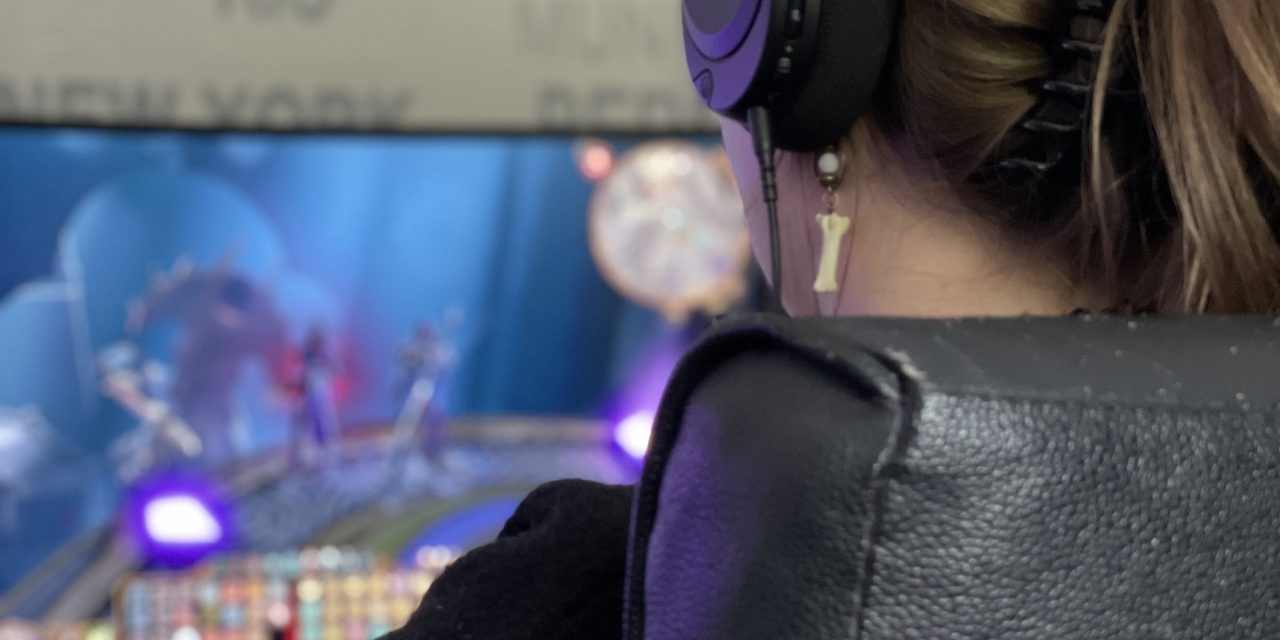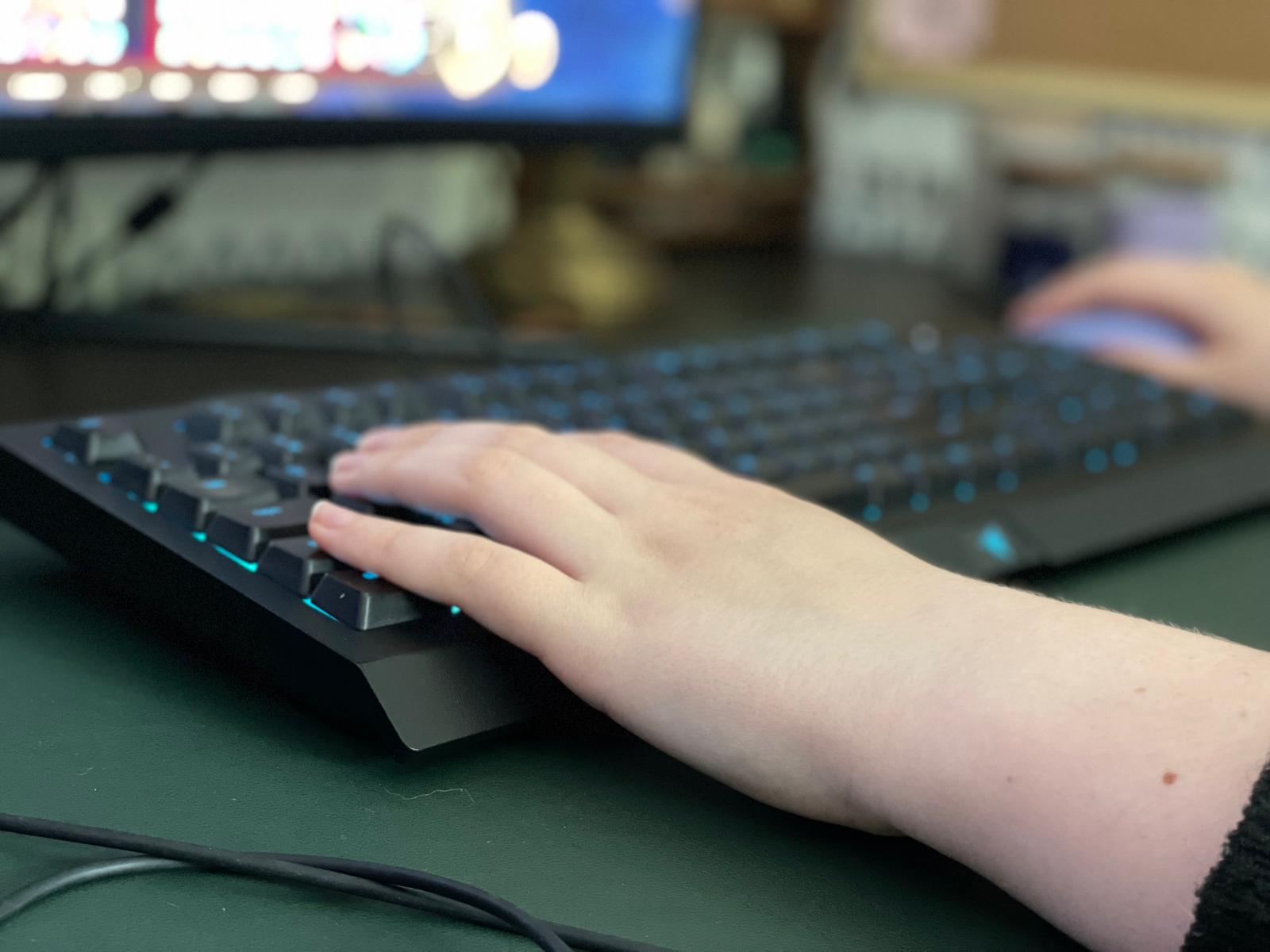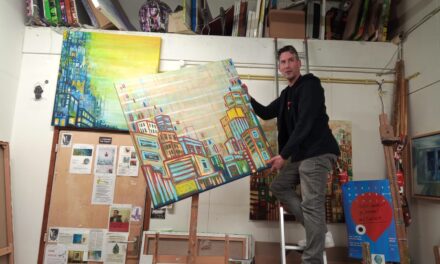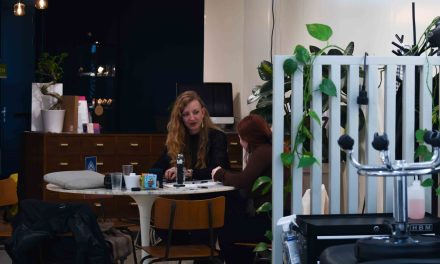Even though the gloomy weather and the dark clouds threaten to wreak havoc on the residents of the city, the city of Ghent shows a bright future for the new generation of game designers in training. Video games are becoming increasingly more popular with a wider audience. As more women openly embrace gaming and its community, female video game characters are gaining prominence. Videogame developers are creating games featuring a female protagonist twice as often in 2020 compared to 2015, going from 9 per cent to 18 per cent. This however does not even count the multi-gendered option where players can choose the gender of their protagonist. And even if these female characters are not the protagonists, they are still receiving backstories and more practical wardrobes. At the same time, ancient mythology is being retold in video games with a more feminine point of view. One might think that these two very different trends could somehow be connected
To understand how and why the female characters within video games are changing, we first must look back at the history of the making of video games. Back when video games were starting to gain popularity back in the 1970s, game development studios were prone to hire only men. Historically, the video game industry and the IT industry are deeply connected. Women in the early days were only hired for low-paying jobs that required minimal technical skills and often faced glass ceilings within the company. On top of that, research on the topic of the target group for video games was not popular. Yet a few press reports underline the fact that female game developers represented barely 3 per cent of the workforce in 1989. This however experienced a growth to 33 percent in 2016. This caused men to be represented as hyper-masculine and women were hypersexualized.
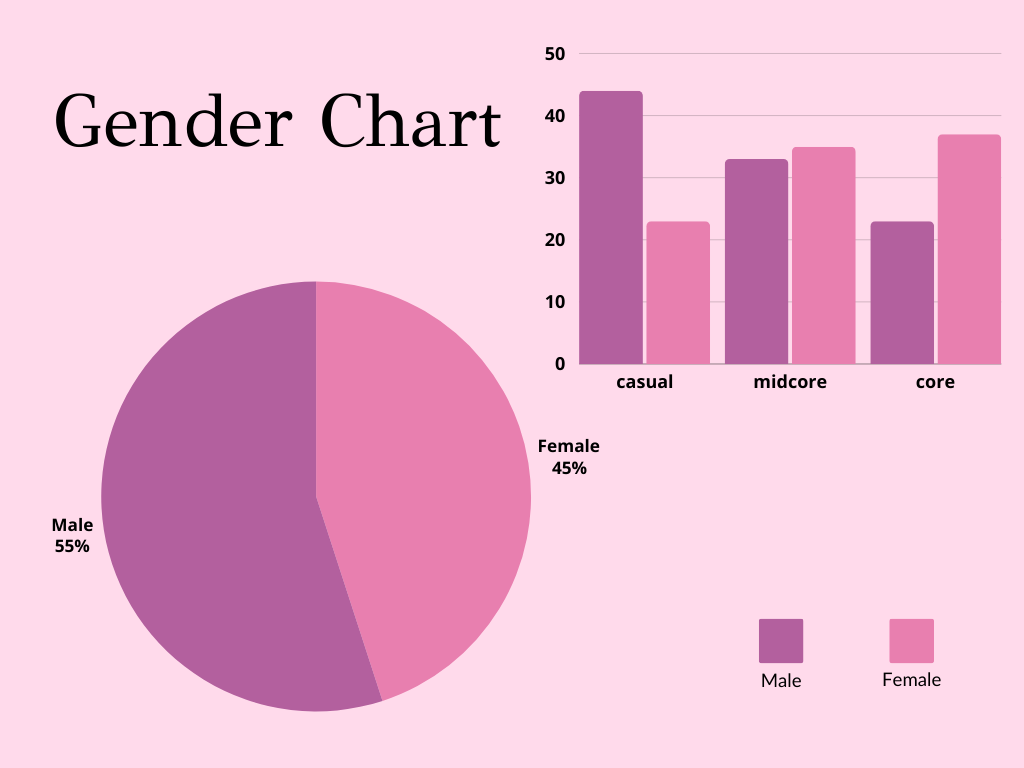

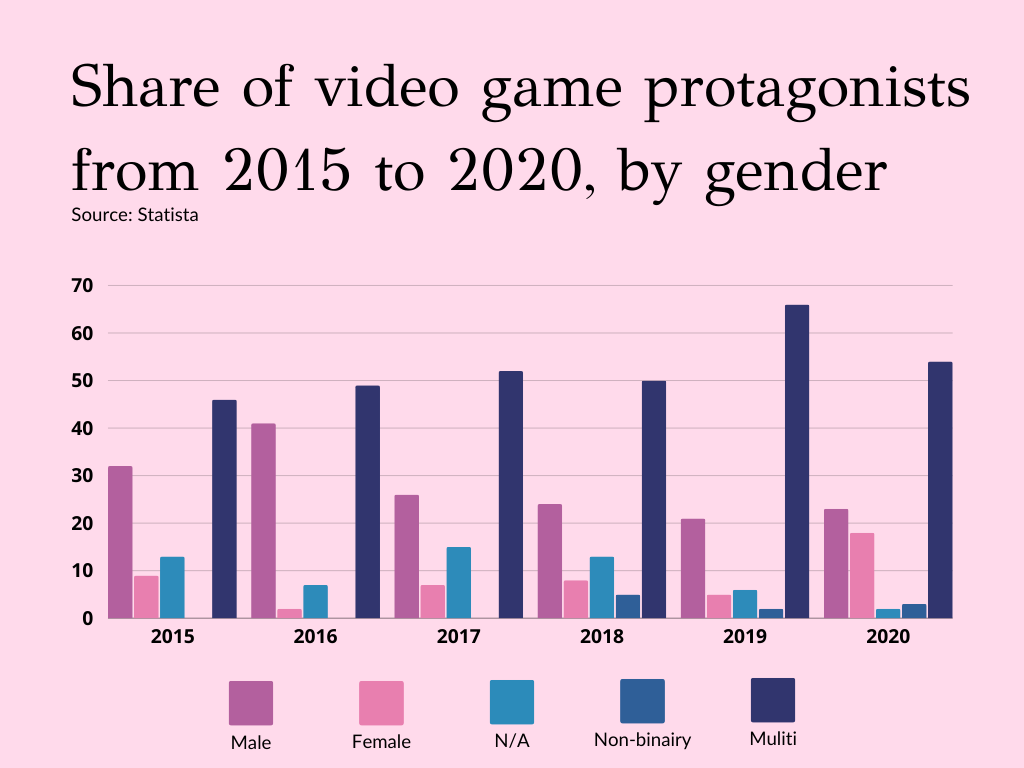
Even though video games were once targeted primarily at the teenage male target group, women have always seemed to have had an interest in video games and their development. The online population surveyed for 2023’s Global Gamer Study show that 45 per cent out of the total cohort that says to play video games are women. Yet 36 per cent of women consider themselves a gamer.
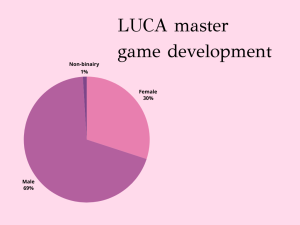
This ratio can also be seen in the classes of Master Game Development at the school LUCA School of Arts in Ghent, Flanders. Even though the halls and classrooms of LUCA School of Arts are now almost deserted due to the three-week exam period, the man and women ratio shows an interesting light on the new gaming industry. ‘Around thirty per cent of the student population identifies themselves as a woman, and a little under seventy as men’ tells Robin Gielis, teacher, coordinator of
Game Design and guidance counsellor for students currently doing their internship. Robin knows a lot about the industry and its current climate from his students’ point of view. He acknowledges the changes within the last few years are visible, yet he also points out that this change has already been going on for a long time within Europe. ‘I notice a huge difference between the United States and Flanders. The United States has now made a countermovement. Yet we notice that the designer who writes the character and the storyline changes if it is written by a man or a woman. So, the balance between the two is not completely the same.’
With three Game development studios scattered throughout the city of Ghent give many opportunities to the Students of LUCA. One studio in particular stands out. Larian Studios is mainly known for releasing the popular role-playing game (RPG) named Baldur’s Gate. This dark fantasy game has taken its inspiration from the fantasy tabletop role-playing game Dungeons and Dragons, which in turn has taken great inspiration from many mythological tales. ‘I really enjoy this game. This studio has been a reason as to why I started my studies at LUCA,’ says LeAnn Kuiper, a first-year student in LUCA’s game development. ‘I just love all RPGs that are inspired by mythologies or are fantasy-based’.
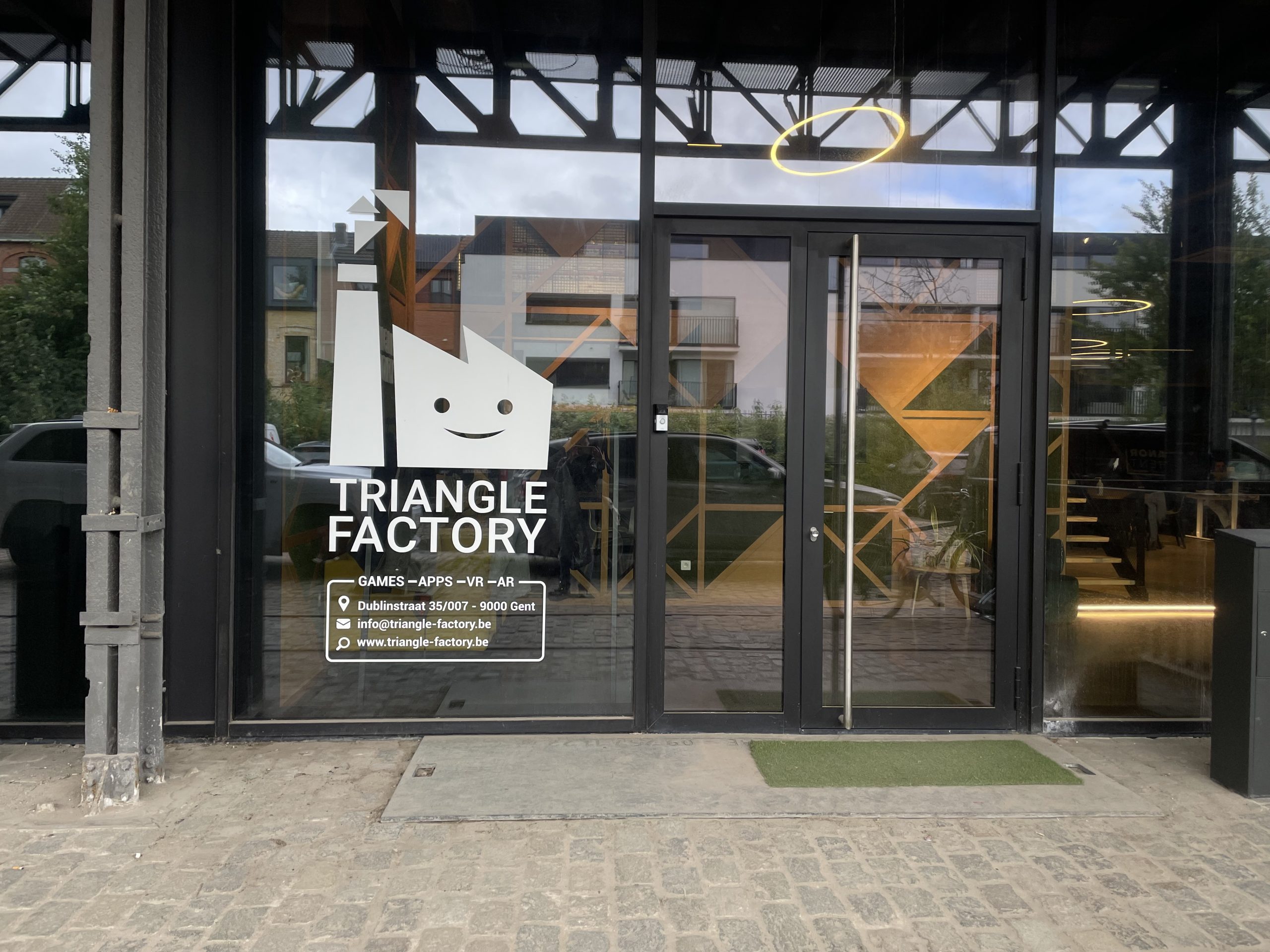



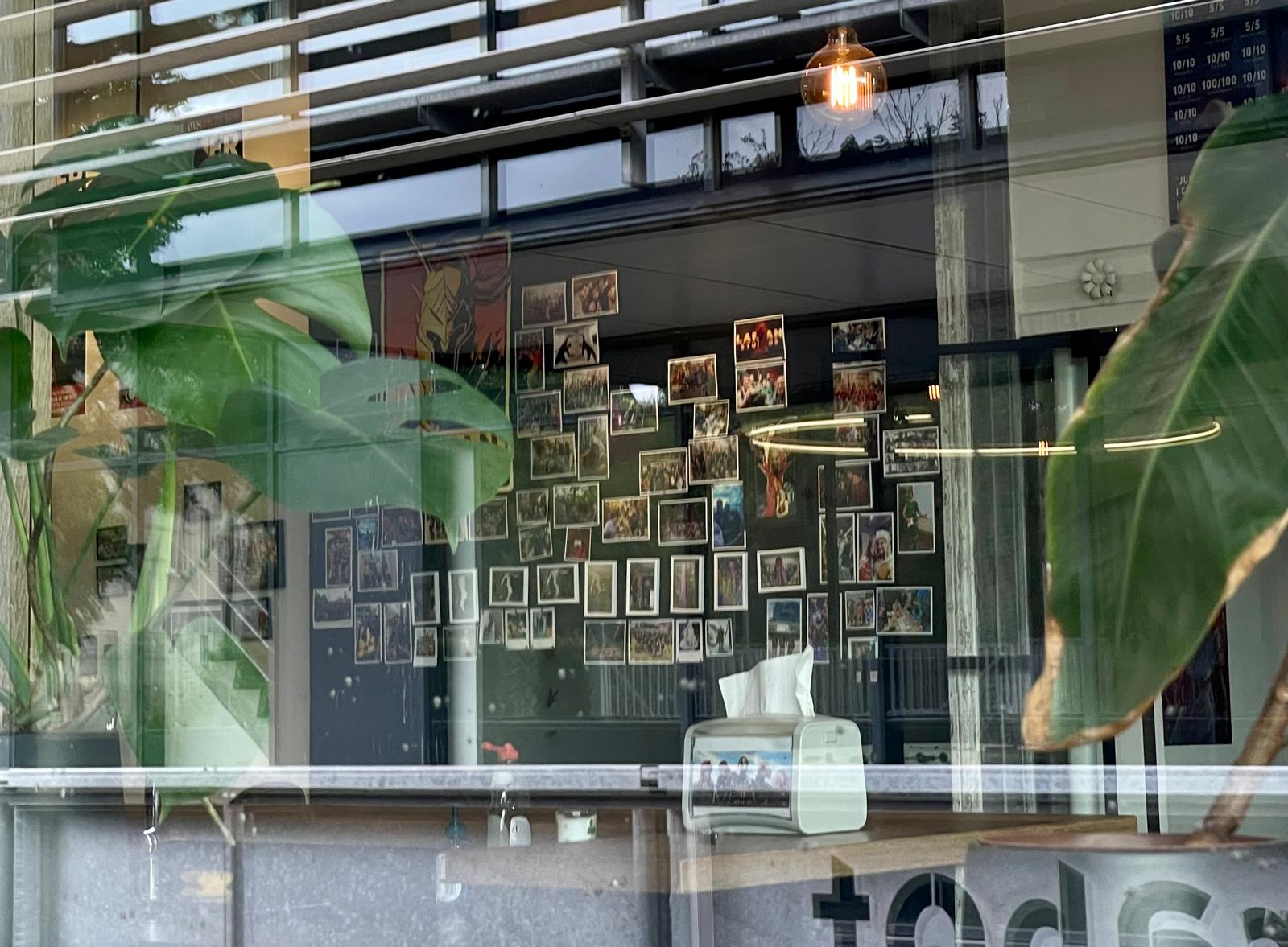
Mythologies have clearly been an inspiration for the game industry for a very long time. Successful games such as Zelda, which has aside its Celtic origin, taken inspiration from Japanese myths and legends as well. They have all proven that taking inspiration from these intriguing stories is popular among the gaming target group. And the popularity is still going strong.
With the new mythology-inspired games such as Hades II from the game developer Supergiant Games was released on the 6th of May this year trending on Steam, mythology-based games are still in all the rage. Yet even this popular inspiration source is still changing the gaming industry. This can be seen in the change of gender in the protagonist. In Hades I, players used to play as the son of Hades, Zagreus. In the new release of Hades II, players will now follow the immortal daughter of Hades named Melinoë. Even though Melinoë is portrayed as a strong woman seeking justice in the underworld and as the daughter of Hades in the game, her original story is much different. In the original mythology, Melinoë is said to bring nightmares, madness and ghosts. In this story, it is Zeus disguised as Hades who fathered Melinoë.
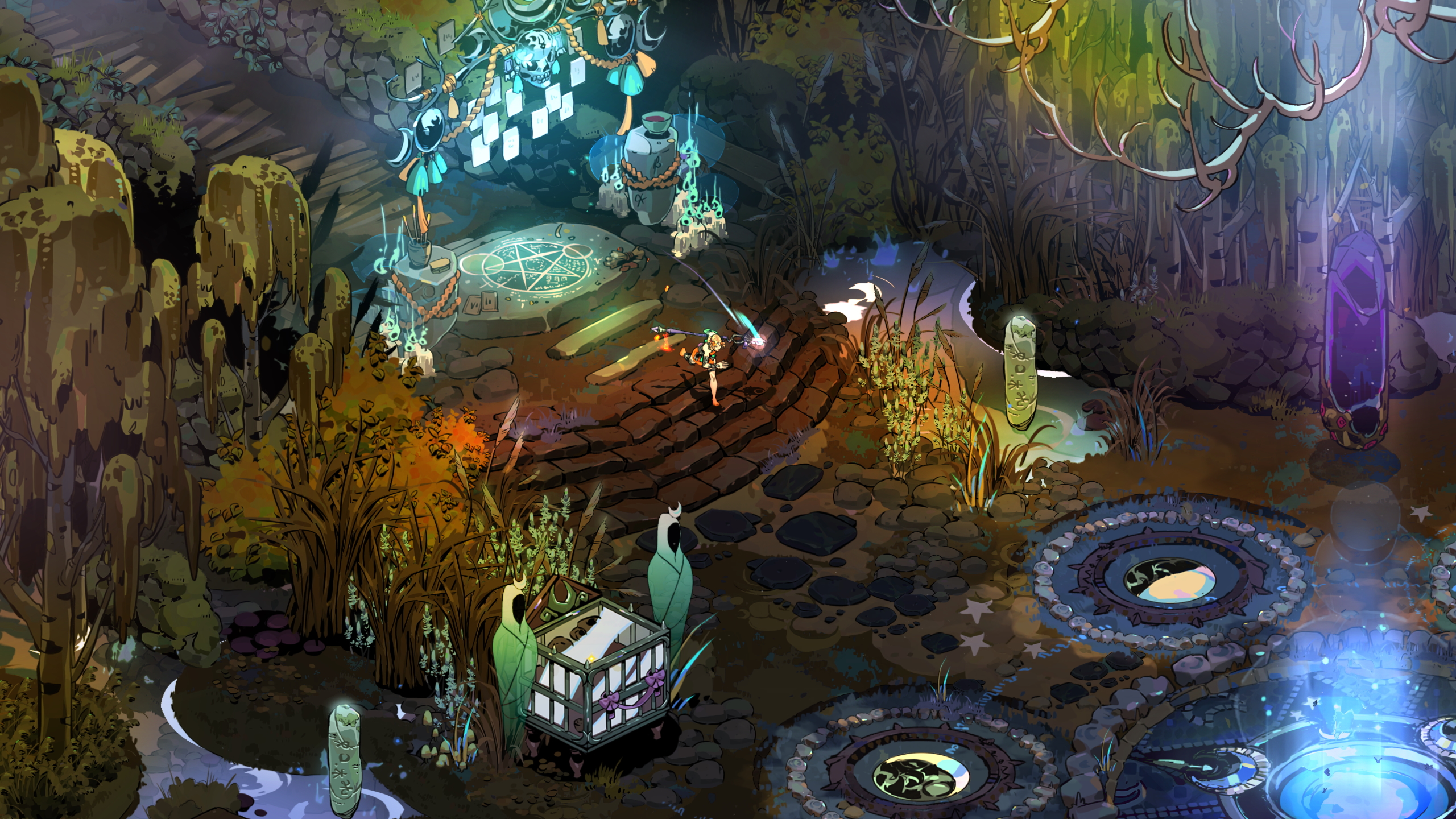
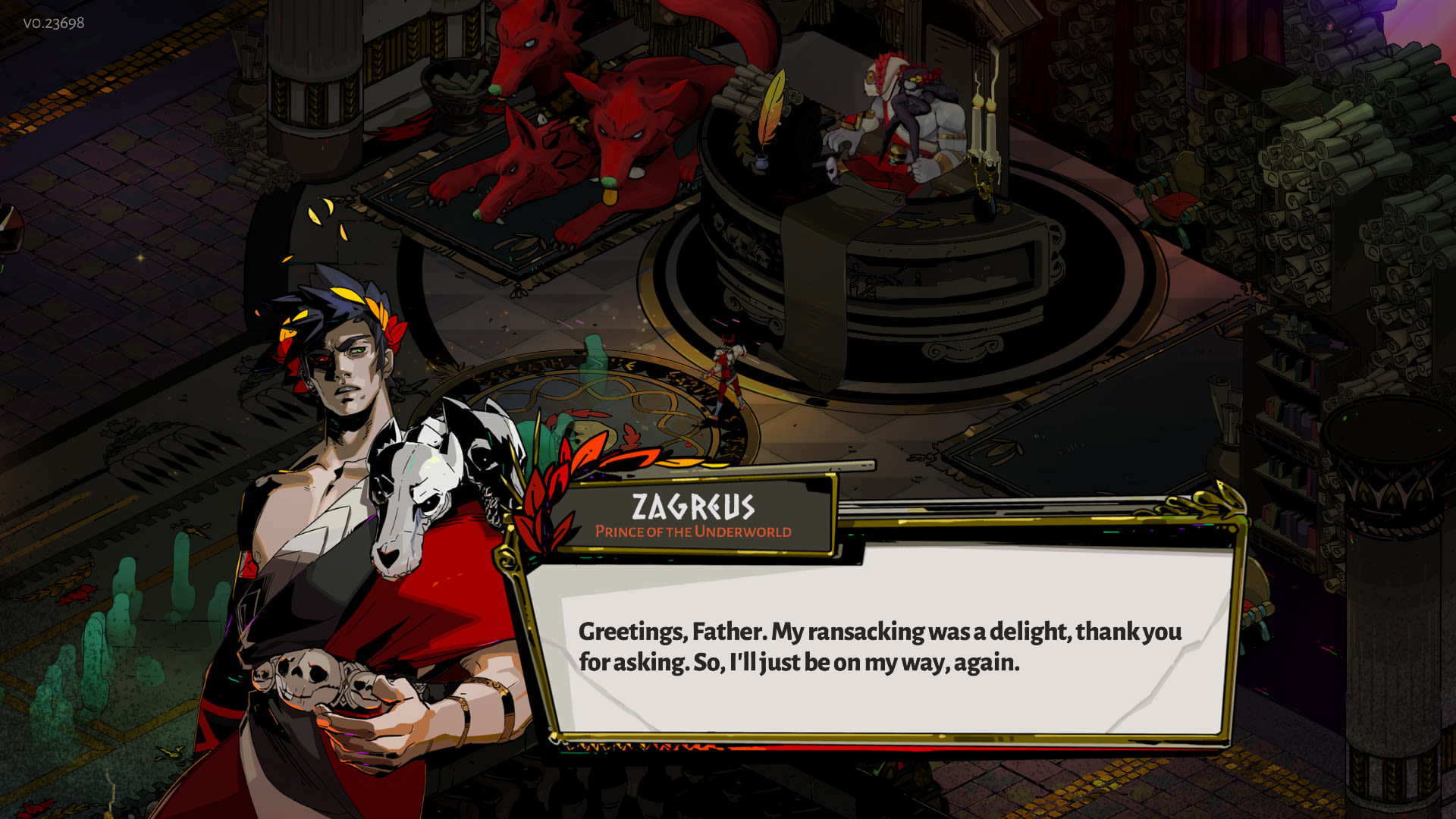

Source: Supergiantgames
Looking back, it was clear that the earlier games inspired by mythology were designed for a teenage boy’s fantasy. But this is changing rapidly. Take the game series God of War for example. The game God of War started as a Greek mythology-based game. Later on, within the game series the game will be based on Norse mythology as well. In the first few games, Kratos, the main character of God of War, would go on a destructive rampage throughout Greece, only stopping to enjoy the nameless half-naked women scattered throughout this world. ‘As a woman looking at these games, you just cannot relate to them. This makes it less fun to play sometimes. This is however changing within the last few years, tells Len Meassen. And the change is obvious. Whereas women used to be either angry or sexy in games such as God of War, they are now much more complex. In their newest version of the game, God of War Ragnarök, players will partly play as Freya. ‘The interpretation of the Goddess Freya as an angry and grieving mother who has a complex and meaningful life. This isn’t something that we would’ve seen her portrayed as twenty years ago. But I can also remember that the Greek Goddesses in the original mythology were often just angry women trying to get control over men.’
When asked if he saw the influence of mythology on games, Robin answered that this influence has been going on for years. Yet at LUCA the influence has become less nowadays. “When indie game developers find something too commercial, they will switch to something else,” tells Robin. “Yet we do notice that students still take inspiration from them.” This is confirmed by LeAnn. “I use a bit of my own experiences in life and a bit of old stories. They make an interesting combination.” Looking at how the students of LUCA design games, there is a difference between men and women. “Women will more easily lean towards deep storylines. Men will more easily choose to solve it with an action. And by action, I don’t always mean violence. Just an action, a deed. Women tend to lean more towards education and underlying storylines that grow through the narrative. Men will more easily choose the hands-on approach. That’s something we notice very much. One is not positive or negative. There’s just a difference in approach. And we do notice a slight difference that women tend to choose a more nuanced approach. And men somewhat more easily choose the rougher approach. But it’s not always violence. I must emphasize that. Luckily, they are not that cliché” Explains Robin. “When you look at feminine women and masculine men, they also dare to create strong feminine characters. Or vice versa. That women say, I want to create a strong male character but in my way. The spectrum has broadened significantly. People dare to experiment more with characters, but also with stories. And more and more things are being addressed that were consciously not addressed in the past. So, the boundaries have blurred, or people dare to cross the boundaries more boldly.
This difference in approach might be the reason why women joining the game development workforce has had such an impact. With organizations such as Women in Games striving for equality within the work field and women naturally adding different views on how developing games can be done, games will become more inclusive. And thus, new mythology-inspired games such as Hades II will have a broad variety of background stories and a diverse narrative approach.
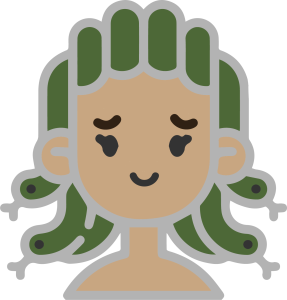 Another reason why the characters of mythology might be so different in the modern retellings of mythology could be due to tales being retold from the perspective of the character. This first-person narration causes mythology to change with modern beliefs. A nice example would be Medusa’s story. The Roman author Ovid describes the mortal Medusa as “a beautiful maiden seduced by Poseidon in a temple of Athena. Such a sacrilege attracted the goddess’ wrath, and she punished Medusa by turning her hair to snakes”.
Another reason why the characters of mythology might be so different in the modern retellings of mythology could be due to tales being retold from the perspective of the character. This first-person narration causes mythology to change with modern beliefs. A nice example would be Medusa’s story. The Roman author Ovid describes the mortal Medusa as “a beautiful maiden seduced by Poseidon in a temple of Athena. Such a sacrilege attracted the goddess’ wrath, and she punished Medusa by turning her hair to snakes”.
There are now many differences in Medusa’s story if you look at how the tale is being retold. The Los Angeles Review of Books writes: “The feminist turn for the gorgon is roughly contemporary with the release of Clash of the Titans. Arguably catalysed by Hélène Cixous’s germinal 1976 essay “The Laugh of the Medusa,” a new crop of feminist poets, novelists, and academics began to explore Medusa’s transformation from woman to monster as a metaphor for women’s sexual repression”. This example of how a tale can change is still in the retellings of mythology.
As the landscape of game development evolves and the mythologies are being retold, it becomes clear that these two are being influenced by each other. The portrayal of female characters is crucial in shaping the future of both aspects. From its historical roots where male dominance and stereotypical portrayals prevailed, today’s game development scene and mythological references reflect a more inclusive and diverse narrative approach.
